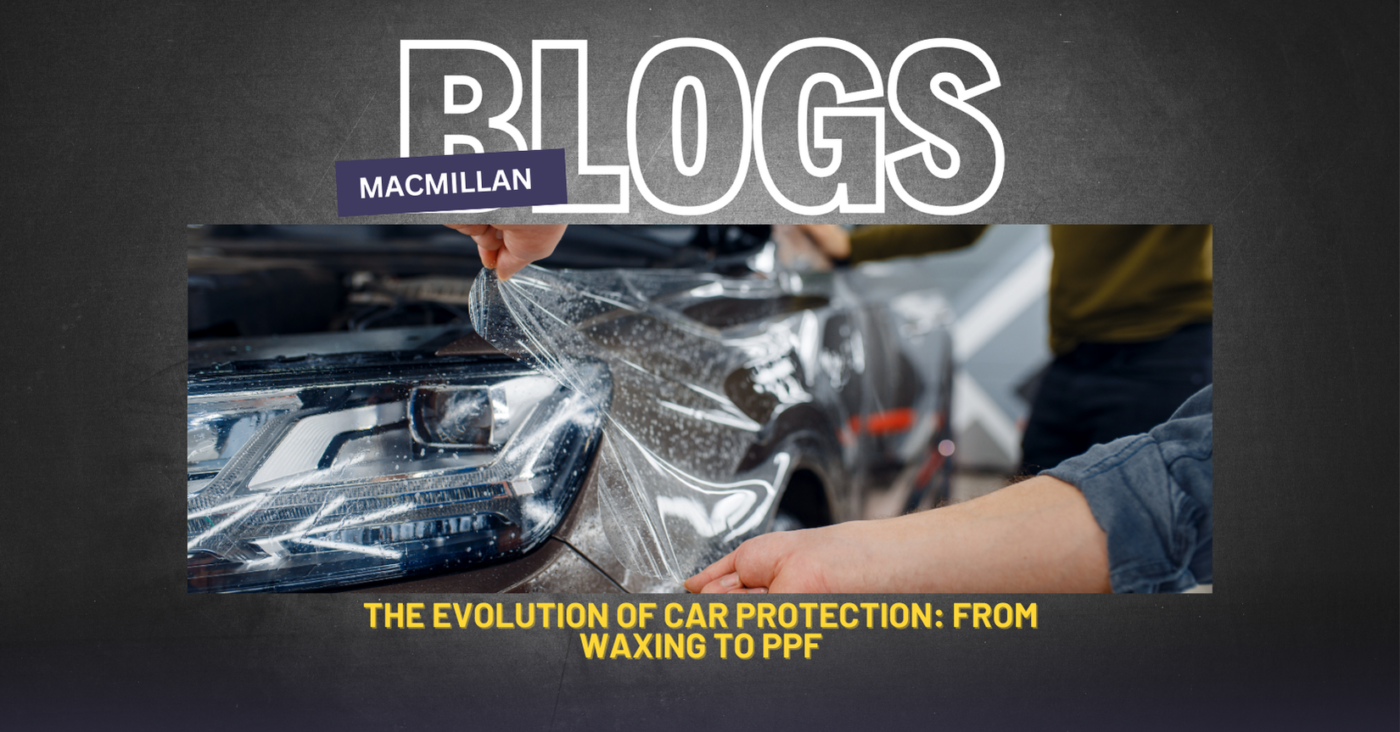The Evolution of Car Protection: From Waxing to PPF
For car enthusiasts and everyday drivers alike, protecting a vehicle’s exterior has always been a priority. Over the years, various methods have been developed to safeguard a car’s paintwork from environmental damage, scratches, and general wear and tear. From traditional waxing to the latest innovation—Paint Protection Film (PPF)—let’s explore the evolution of car protection.
The Era of Waxing
Car waxing has been a staple in car care for decades. The process involves applying a layer of wax, either natural (such as carnauba wax) or synthetic, to enhance the vehicle’s shine and provide a temporary protective barrier against dirt, minor scratches, and UV rays. While waxing can give a deep gloss and hydrophobic properties, it requires frequent reapplication, typically every few months, to maintain its effectiveness.
The Advancement of Sealants and Ceramic Coatings
As technology progressed, synthetic sealants and ceramic coatings became popular alternatives to traditional waxing. Sealants, made from synthetic polymers, offer longer-lasting protection—sometimes up to a year—against contaminants and oxidation. They also provide a smoother and shinier finish compared to traditional wax.
Ceramic coatings, introduced as a more durable solution, revolutionized car protection. These liquid polymer coatings bond chemically with the car’s paint, creating a hydrophobic and highly resistant layer that can last for years. Ceramic coatings effectively shield against UV damage, minor abrasions, and chemical stains while maintaining a glossy appearance. However, despite their durability, they do not offer complete protection against rock chips and deeper scratches.
The Rise of Paint Protection Film (PPF)
The latest and most advanced form of car protection is Paint Protection Film (PPF). Originally developed for military applications, PPF is a clear, ultra-thin polyurethane or polymer film that is applied directly to a vehicle’s paint. Unlike waxes and ceramic coatings, PPF provides physical protection against stone chips, scratches, and environmental contaminants.
One of the key features of modern PPF is its self-healing properties. Minor scratches and swirl marks disappear when exposed to heat, ensuring the vehicle maintains a pristine appearance for years. Additionally, PPF offers superior UV resistance, stain resistance, and an almost invisible layer of protection without altering the car’s aesthetics.
Choosing the Right Protection for Your Vehicle
Each method of car protection has its benefits, and the best choice depends on the level of protection and maintenance effort a car owner is willing to invest in. While waxing remains a budget-friendly and traditional option, ceramic coatings offer enhanced durability. However, for those seeking the ultimate protection against physical damage and environmental hazards, Paint Protection Film is the industry’s top choice.
As automotive technology advances, so too do the methods available for preserving a car’s appearance. PPF represents the pinnacle of modern car care, providing long-term protection that keeps vehicles looking showroom-new for years. Whether you’re an enthusiast or just someone who values their vehicle, investing in PPF could be the smartest decision for preserving your car’s beauty and value.

